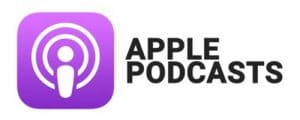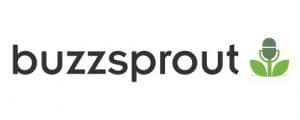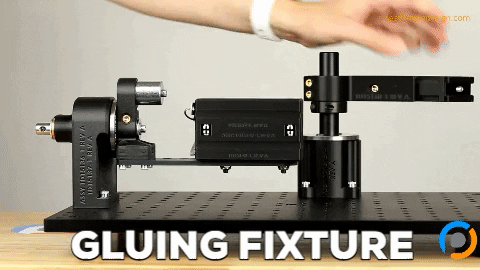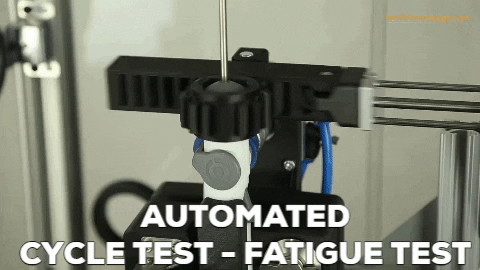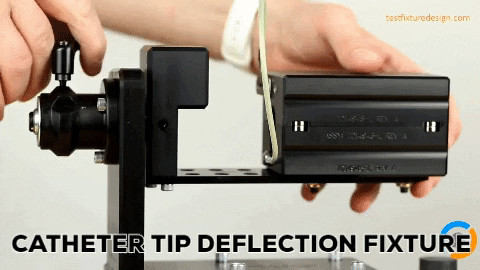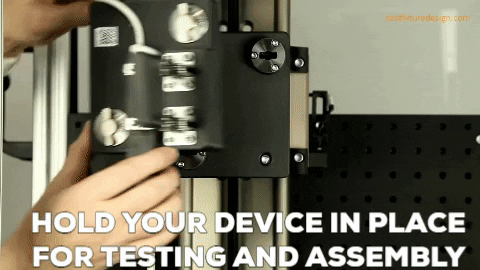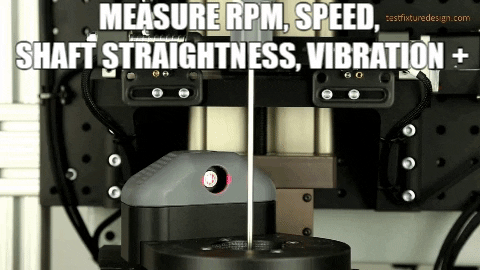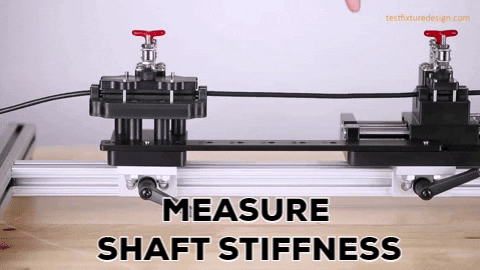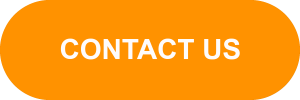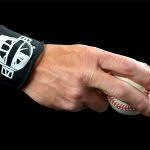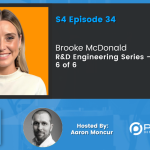S4E31 Danny Payne | OnShape CAD, Expert Witnessing, & NOT Moving Into Management
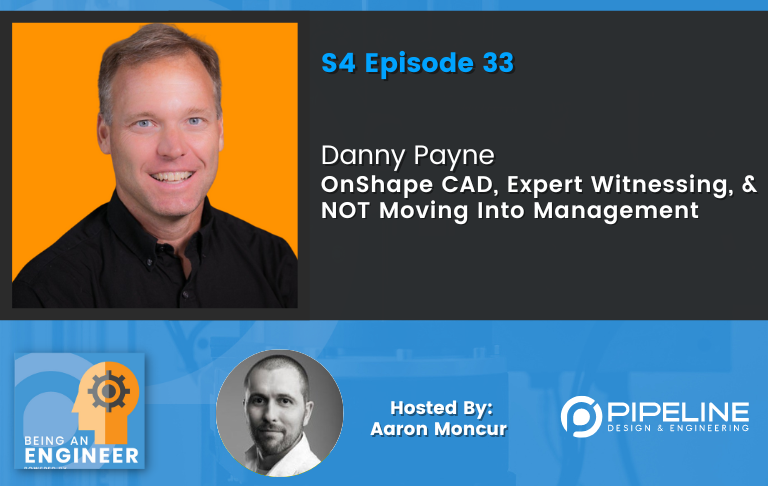
Who is Danny Pane?
Danny Pane is a mechanical engineer and senior principal engineer at Edwards Lifesciences. Danny has experience as an engineering expert witness and in process development, and is also an active user of OnShape, a modern cloud-based CAD program we’ve talked a little about on the podcast before.
Aaron Moncur, host
Danny discusses the importance of designing for high volume manufacturing in this week’s episode of the podcast. Pipeline has a proven track record of helping customers ramp up their production, saving time and money. Learn more here.
EXPAND TO VIEW EPISODE TRANSCRIPTION
SUMMARY KEYWORDS
engineer, design, engineering, solidworks, share, fun, years, general atomics, danny, laptop, tools, talk, cad, company, called, skills, product, senior, cool, started
SPEAKERS
Presenter, Danny Payne, Aaron Moncur
Presenter 00:00
Hi, everyone, we’ve set up this being an engineer podcast as an industry knowledge repository, if you will, we hope it’ll be a tool where engineers can learn about and connect with other companies, technologies, people, resources and opportunities. So make some connections and enjoy the show.
Danny Payne 00:18
I see it a lot. And I did it. I mean, I as a young engineer and I at the senior genericity, stop this. Stop skipping steps, right? One of the first things you’re taught in engineering school, it’s draw you freebody diagram, people is like muck draw your freebody diagram. There’s the solution right there, you just drew it.
Aaron Moncur 00:53
Hello, and welcome to the being an engineer Podcast. Today we’re speaking with Danny Payne, who is a mechanical engineer, and currently a Senior Principal Engineer at Edwards Lifesciences. Danny has experience as an engineering expert witness and in process development, and is an active user of onshape, a modern cloud based CAD program that we’ve talked a little about on the podcast before. Danny, thank you so much for joining us today.
Danny Payne 01:20
You’re welcome. It’s good to be here.
Aaron Moncur 01:23
All right, well, what made you decide to become an engineer?
Danny Payne 01:27
Well, I’ve been thinking about this and thinking about the story of how I did that, as people have asked me. And I’d have to say, when I was young, you know, starting just to play with the development toys, everyone had Lagos, right, and you played with Legos and enjoyed the Legos, I had an erector set that I really enjoyed to play with. As a kid. I remember playing with that and building cranes and building cars and building things with the erector set. There was a Crayola drawing kit that actually had a whiteboard with the T square, and triangle and stuff like that. So it actually show you a book on how to draw things that did not go on from there and draw my own things, you see those drafting tools. So that was a lot of fun. We got into just really enjoying working on things, I take my bicycles apart, re grease the bearings, put it all back together again, go out and ride, come back, take it apart, do it again. I would work on cars, and such, my father was mechanically inclined. So as always the one who was just like, Oh, I’ll tear into that, let’s do it. In high school, my senior year, I was taking two hours of auto shop. And the teacher was saying, hey, why don’t you go on to the community college and get a tech degree or get a license as a mechanic. And at that point, as I know, I don’t want to do this full time. But I want to design the car. What’s that? So I found out that to an engineer, and so I was like, that’s what I want to do. And it’s kind of funny, though, is incidentally with that. My, the auto shop class that the teacher ran like a competition skills test, right. And if you were in the first two or three people in the skills test, you got some tools, and you got a high school letter. So I finished second so I ended up with a high school letter, a pneumatic torque wrench and tap and die set.
Aaron Moncur 03:52
So wow, how cool.
Danny Payne 03:55
So I still have the tools Jeeves Lowe’s, the letter somewhere in a box in the basement, I kids can decide what they want to do with that.
Aaron Moncur 04:02
Oh, that’s a great story. I mean, like, classic engineering upbringing, right, like hands on building cars. And that’s, that’s awesome. So now, now that you are an engineer, and you understand the design process, you are very well versed with one of the tools that we all use, which is CAD. And you use SolidWorks, as I understand. And you also use a program called onshape. And I thought it would be interesting to talk about that just a little bit. We actually had John Hirsh stick the founder of SolidWorks and onshape on the podcast a little while ago, and we talked a little bit about it then. But we haven’t had like a user of onshape on the show. So I’d love to hear a little bit about how did you come to learn on shape? You know what, what was the reason behind that? And then what are some things about odd shape that that you maybe prefer from a US server or functionality standpoint over SolidWorks?
Danny Payne 05:03
Ah, good questions. So with onshape, I came to know it back when they did their media blast or when they first started out. I forget how many years ago, that was, I was working for a company called General Atomics systems integration. We all got the same email because we’re SolidWorks users, somehow, they got our email addresses. We all pulled it up, signed up for the free account, I looked at it and I was like, Oh, this is a little better than SketchUp, then Google SketchUp, which was out at the time, and played with it a little bit at the time. And then just let it sit off to the side. Several years later, switched over to Edwards Lifesciences. And some of my co workers were talking about it, I said, Oh, I should open that back up again. And so I opened it up, my account was still active. And I looked at it, I was like, Oh, my goodness, where the work how far they’ve come from several years ago, when I signed up for it. So then I started playing with it and started to design little knickknacks. And such and looking at, okay, you know, what trinket Can I can I 3d print for my motorcycle, you know, what plastic little piece? What could I do for it, you know, on that, and was enjoying that quite a bit. And so an opportunity came for me to actually do some contract engineering work at night, an automated gas date company, my sister actually owns it back in Northern Virginia, Jade logic securities. And she actually came to me and said, Look, I have a customer who needs a professional engineer to design and stamp drawings for a gate that we need to ship to the US Embassy in Mozambique. And so I was like, Yeah, I don’t know, is she says she came back a couple of times. And finally I said, Okay, give her a quote for it. And she’s like, Okay, if the customer says Good, let’s do this. And I was like, Oh, maybe I was too low. But then I updated from hobbyist to professional, and really got into the onshape. I did the update, so I could do drawings for it. And also keep the models confidential. When you’re a hobbyist, they’re out there for the world. So I’d recommend if you want to keep something confidential, harder to find, like use your initials and some generic number Vietnam, because he is going fine bat right. And I mean, come on is like when as a hobbyist who’s going care about a little plastic bracket for a Yamaha WR 450. Right. You didn’t know actually proper proprietary there. But so I started doing some contract work and started to get into it more. And I was going through the tutorials, they have awesome video tutorials, I was blown away by by those coasts that it’s one thing it’s like the SolidWorks you go to the users groups you go to go engineers to in a lot of videos now as the far and then the, you know, you get different groups that do it privately, and things but to actually have a company, putting this much effort into their training videos was awesome. And so it was really quick and easy to pick up. And just go with it. And I think that I loved about onshape was I did it have to buy a new computer, like the computer we’re talking on is probably close to 10, maybe 11 years old. Just a Dell desktop I picked up at Costco and having onshape as a Software as a Service as a SAS it’s all on the internet. So any device I have can access the internet. access it and then you can get on onshape right. My son years ago for Christmas, he wanted $150 laptop. We bought it for him he since moved on, you know he’s now 21 buying his fancy gaming computers that I pulled one of those laptops out spend 150 bucks for it, you know, eight, eight years ago or something? It runs on cheap Awesome. That’s I double it is is so funny, I show it to people and I’m like this little thing drives this because of wow all out bass, you know. So on my song, I can access it on my phone. And the thing is This is like my son had a hobby account. And I could share model with him, we could be sitting side by side in the same assembly on the working on the same parts working on things. And with with SolidWorks, you have to go in there and you have to make things like way you have to say, Okay, you have control, I don’t have control, you have to refresh, you just cross your fingers and hope it doesn’t crash and things. Without unsafety, I was just blown away at how well did that. And then sharing files was so easy. Like, I’d send them back to gate logic and say here, take a look at these. And I like I’d have to send them as a leech. And they would just open it up and they had read access. And they could just look at it very quick and easy. And I don’t know if you’ve ever used through Google Docs, how you can open a Google Doc, and invite someone to see it. And they can watch you work on your screen. And in on shape, you can do that. And so you can say, hey, take a look. Let me show you open this link and watch what I’m doing and zoom in and out a specific areas of the assembly and parts and say this is what we’re talking about. Right? So you could do it in real time. And they can see it. And so I was just like, wow, okay, you know, this is way cool. And the pandas is, you know, the advances are coming every three weeks, you’re up to date, all the time, you know, at work on SolidWorks 2021, on camera hesitating to go 2022. Because my, my graphics card is outdated on my laptop that’s always five years old. And there’s issues with it with 2021 with maybe 10 parts open in assembly. And I don’t want to give up the computer because it works. And I don’t want the newer version, because I’ve heard there’s problems with it. You know, and I’m like, that’s not my please don’t take this from me IT department another it you know your laptop’s old and we should replace it. It’s like now.
Aaron Moncur 12:16
It works. Don’t touch it.
Danny Payne 12:18
That’s exactly right. Right. So, I mean, you don’t have any of those issues with onshape. And when, before COVID, we had to use his group meeting here, for the Utah onshape group, one of my co workers runs the SolidWorks users group of northern Utah, for over 10 years, he runs the creo. One, he signed up to do the onshape. One back when they’re doing local areas, now they just do it kind of on the internet, everybody get together, nationally or regionally. But before that it was in person. And so that was actually kind of cool. And to go along with that is the ad ends that you can get for onshape the things you can turn on and one of them that blew me away was this company called onScale. I don’t know if you’re familiar with them. But they’re an SCA computer, the RS FTA software. That is the same idea is basically if you can access the internet, you can get on it and run it. And holy cow is that program. Awesome. So with real X, yeah, check it out, check it out, it’s like and you can have a hobby account or a free account, you get 10 core hours a month, something like that. And they’re just recently acquired by ANSYS. But that’s, that’s a different story. But we will touch on that a little bit. But we I stayed with the professional account for the last several years for onshape for the contract work that I do at night. And I love the advancements and they brought in simulation, and to onshape that’s embedded in it, which is really kind of cool and fun to play with. And if you go on and do the tutorial for simulation, they talk about they’re not gearing that towards a full blown analysis program, but they want to help the designer get a good feel for the design. Right. So it’s a good placement and like, ah, by me, I understand what you tried to do with this because when you look at SolidWorks and simulation that they have in SolidWorks you count like what’s going on here, you know, are you really using the abacus inside here and the abacus solver What are you using and here, you know, and you get cosmos and stuff like that. And it’s kind of like Okay, are you guys truly doing an analysis or is this just basically to help the designer have a good feel of the design? And then the design goes off to the full analysis group that actually died. Zen and does the deep analysis work. So with the onshape, you know, in the mates, just the being able to connect things is quick and easy. Those managers really errs. When you learn on it’s like, oh, this is cool.
Aaron Moncur 15:18
You know, it’s it’s so interesting hearing you talk about this, we had, we had John on the the founder of onshape. And of course, he talked in our pride because he founded the company, it’s his baby. But it’s a lot different to hear an actual user talk about it and and talk it up, you know, to the same extent as the founder was, we’re actually just starting this, this thing called CAD club, here, a pipeline where we’re opening our doors one, one day a week to some of the youth in our community and bringing them in and showing them how to run CAD and teaching them a few engineering principles where this week is the first week. So I’m super excited for this to start. Anyway, I decided that we should use onshape for this class, because, well, all of the reasons that you just mentioned, right? There’s, you don’t have to have a high end laptop for it. You don’t have to help install files, you don’t have to update things. They just access the cloud based application, and they can use kind of any old laptop. In fact, my son is one of the kids who’s going to come and he has this, this school issued laptop, and it’s it’s a piece of junk, right? Like they’re these cheap little laptops. And just like your son, I guess, right, that $150 laptop, but he fired up on shape, just to see if it would work the other day, and it works great, no problem at all. So I of course, don’t have near the experience that you do yet. I’ve just played around with him for maybe a few hours so far, but it is pretty cool. You know, just the modern technology, the the sharing, and the collaboration tools and things like that. Oh, and then I’ll just second what you mentioned about the the training resources they have, they have like a fully worked out training courses that teachers can use to teach on shape. So originally, I was like, I’m gonna have to figure out not only how to use the software, but then like how to teach it to others. But no onshape already has all of those resources. They’ve got like, PowerPoints that you go through. And there’s like a document for the students and a document for the teacher. And it’s the documentation is really well done. I mean, very thorough, and and just intuitive. So anyway, I think SolidWorks and Pro V or whatever they’re called now Creo NX read it, they they’ve got to step things up, because onshape really brings to the table some amazing tools that these other legacy old school programs just just don’t have.
Danny Payne 17:52
Bass. So true. So true. You know, back, like I said, when we had that onshape Users Group here in Utah is right before, right when pro engineer are PTC, bought onshape. Right. And so they went into a little bit of that. And the people at ptc are like we either have to take seven years to develop and get to where onshape is now and then they’re going to be ahead of us, or we buy them and bring them in. Because you just can’t take a old architecture of a program and dump it on the internet and have it as a SAS, you have to restructure, you have to redo it all. And I don’t understand that that’s beyond me. That’s a computer person. But I understand enough that you can’t take something old and stick it into something new.
Aaron Moncur 18:39
Yeah, totally. Yeah, that’s that’s great background for onshape. For all of you out there listening who are curious there, there’s a free account that you can use. And it’s I think it’s fully fledged I mean, it’s for hobby use, right? You’re not supposed to use it commercially. And like Danny said, all the files are public tactically, although I’m sure clever naming conventions can effectively eliminate that risk. But anyway, it’s a great program. Super cool. Good. Go check it out. And onshape is not paying me to say this. I’ll also mention All right, well, let’s see. Let’s let’s maybe move on to another topic. You worked at a company called Alpine engineering and design where the principle service offered is to be an expert witness for engineering related legal matters. I don’t think we’ve ever talked about this on this show. So I’ve been excited to hear a little bit about that. Can you kind of walk us through some of your responsibilities at at Alpine like what was your day to day operations like there?
Danny Payne 19:40
Well, when I started on that Alpine engineering and design, that was when I moved here to Utah is looking for work found a posting at the Utah job site applied for it and was hired on and as a project engineer, and as actually working projects. The main incident where he and another professional engineer, were doing some of the expert witness work. So I would have been just a year out of college at this point. So I was a junior engineer, I specifically was looking for a company that had professional engineers I could work under, so I could get my four years to get vouched for so I could take my PE license. So I never had to do like the interfacing within the lawyers and things I was more helping them, collect that data or help them do some testing or do something like that. And working on other projects, and doing design work bear, though, what I was able to see and learn from those guys is amazing. You know, you think you do a great design. But things happen, accidents happen. And so you start to look at that, and you start to see it’s like okay, well, maybe there was something at fault here and one of the ones I share with people often. There, it blew me away, that the owner, Fred Smith, brilliant, brilliant guy. He was talking with a lawyer, and it was a one of those rides right behind pallet jacks. So a motorized pallet jack, and this lady. Somehow it didn’t it the brakes didn’t work. And the pallet jack coasted and slammed her knees into a conveyor belt. So it hurt her right. And so the question is what happened? What went wrong, right? And you looked at the machine and everything looked right, everything looks good, that Fred was able to find there was one spot in the position of the lever of the handle that put all the controls to the dead spot. So we’re kind of designing all the controls, you know, out there is overlap or something. But there was one spot, basically where the controls didn’t work. Just so happens that day, everything aligned that the handle was in that spot, so it didn’t work. And what he was going through in testing to find that is like, wow, he was really spending time on that machine. And looking at and doing it and it’s just like, is just it’s a sad point, right? That the engineers, I’m sure they thought they had done everything that they could that this wouldn’t happen, that just everything aligned that day. And so, you know, I don’t really remember the outcome of that one, that I was just always impressed with the amount of work can dig into the root cause of what could have happened, you know, and finding out and probably lessons were learned designs were changed and so forth by that company, so that no one else would get hurt, because that’s no one’s intention, right. There was other ones that was that would turn down a sickly I remember, there was one mic with a table saw, and the gap between the blade and the rest of the table. And he went out and he investigated and found that the more expensive the saws, that gap came a little bit bigger. So you could put different additions on to it. That as they start to dig deeper, the expert witness or not, the expert would miss the person who got injured, had said that he had drunk in a few cans of beer prior to the accident and cutting and south. And so it’s like, no, we’re not taking this one a further. Sorry. You know, yeah. And so it’s like the integrity to say, Okay, we’re not going to try and find something that isn’t here, but pretty much. You know, once alcohol gets involved, it impairs people’s judgment. And that’s going to be tough with it. So I wasn’t super involved with any of that I like I said as, as the E one the level one engineer just helping out that I was just amazed that the skills they were using to try and figure out the root cause and say, Is there you know, give advice to the legal team to say, maybe you do have a case here but if you don’t if you need to just step away. Now do you
Aaron Moncur 24:39
feel like the experiences you have there prepared you in any way to to be a product designer yourself?
Danny Payne 24:48
It helped me think about people a lot, right? It helped me think about what am I doing? And am I doing everything I can to make sure the product out, isn’t going harmed somebody, right? When, as a General Atomics, I had the opportunity to draw to design a test stand, or workstand, that was two stories is to work on the C five landing gear, Beagle gear, right? And then they are old equipment was outdated, it did moved around several times from different bases that needed new equipment. So we designed some new equipment, so there would be people on that upper floor working, and there would be people below them working. And so you know, thinking about, okay, you know, here are the standards laid out by the building code of what the floors need to be able to hold. And, you know, you think about and you just, you hope, you know, the math is all there, everything says it’s all good. And you just hope the stars don’t align someday that someone gets hurt by something, because I would definitely lose sleep, you know, it’s like, I tried to stick with the good formulas that have been in practice, stick with the standards, and just do good engineering principles. And a lot of it does come back from seeing that work that these engineers were doing. And these cases, being expert witnesses and, and the safety things. So I think so yeah. Yeah.
Aaron Moncur 26:23
Well, let’s see, you’ve, you’ve been in the engineering space for for quite a while now, a few decades, at least. And I’m sure that you’ve had opportunities to kind of move into management. But and correct me if I’m speaking out of turn here, but I think that you’ve decided kind of not to go that route and, and focus on being more of a subject matter expert, you’re a principal engineer now, what what’s prompted you to stay more in the kind of hands on engineering versus going to like management?
Danny Payne 27:00
When I I’ve had experiences with project management and debt like it, I Dan, why cow. I had to attend a lot of meetings, and took me away from what I considered the fun things of engineering. And also its cow I, you know, as a project manager, you have tasks assigned, you pass them on to other engineers, but you have really no authority to really say, Hey, you gotta get this done. You just go, hey, please, can you get this thing? Please? Can you get this done? No, don’t don’t make me go tell our supervisor or whatever, you know. And then it’s like the accountability for the for budgets, that you really don’t have much to say about earnings. And so I really saw it, and I saw to some of my co workers and stuff as they moved into management positions. What have you always said it? Just Yes, I took a Gallaudet pay increase, but the amount of hours now that they’re wanting me to work, it’s not a pay decrease?
Aaron Moncur 28:02
Oh, interesting. He can.
Danny Payne 28:07
And so I was like, that’s not good work life balance, you know? It’s, it’s been one that, you know, I shied away from my I’ve always thought that if I could help develop younger engineers, but not necessarily have to attend managerial readings, and not have to deal with like, okay, the time cards, the other human aspects of it, just like, hey, let me teach you engineering skills and help you with chap guiding you on designs and stuff like that, and skills. I you know, as a soccer coach for 16 years there abouts, and teaching young kids, the game of soccer was always enjoyable. And all Yes, I had to design the lesson plan. And so I laid out the game tax deeds, the technical stuff, but it was fun to get him to develop that I wasn’t attending meetings day in and day out on these players. And I wasn’t having to report to a human resource person about these players or anything like that. It’s just just watch him develop and grow. That was fun. So, you know, if there was something like that, that’d be fun. But then also another another part of that was kind of like deciding who I want to be. Early on in my career as an engineer, I was out of college working for a company called trim systems. We are tier one supplier to Freightliner back in Portland area. And there was a older gentleman. We as engineers, do you sit in the same room eat lunch and things? And so during lunchtime, he had spent his chair around and he’s like, Hey, Danny, and that’s around City Hall. He asked what you know, did he give me some word of advice? You know, something like bags like something he’d share. And one day he I said, Hey, Danny, as I spun around said, yeah, hey, girl, what’s up? Yes. And he said, I want to share something with you, as I Okay, so it’s know who you are. I was like, Okay. And he says, like newness is how I define myself, you know, I’m a son of the God, right? I am a husband, I am a father. I am, you know, an engineer types that and he says, those are my priorities in life. If you set your priorities, then there’ll be time for everything else, you know, a calf like that analogy with with the big rocks in first and all the little stuff will fall in type thing. Yeah. Yeah. So, you know, I’ve heard that before and things and kind of, like, hit me at that point. And I remember going to a trade show to the big North America truck convention. And outside it not as kind of our point, you know, you’re fresh out of college. And you’ve had great experiences growing in school, right? Every, every few months of learning a new subject, you’re tested, you’re advancing and skills, you know, number crunching, and things like that. And you get to the real world. And it turns into lots of document writing lots of documentation. And, you know, you kind of gets rather frustrating kind of upsetting, right, that’s like, this is what I went to school for, I don’t want to be Document Writer, you Oh, and stuff is out this show. And I was I had a few minutes to sit and think, before the show opened, I thought about that, who am I? And I said, Who do I want to be as an engineer, right? As I said, I want to be an engineer who can design, analyze, and build mechanical things. And so that lifted my spirits lifted me up with through the show. And that’s kind of been my motto and kind of like Khadem II thing I’ve carried with me, it’s what do I want to do? You know, I want to be that engineer who designed analyzers built stuff, and actually have that as my little thing underneath my picture on LinkedIn, you know. So it’s like, you know, I don’t want to be a CAD jockey, who’s just doing CAD work all day, I don’t want to be the FDA guy, that’s just doing FDA every day, day in and day out, you know, I don’t want to be the mechanic. But I’d like to be able to have times in which I could do all three of those. And to me, that’s the fun stuff. That’s the fun. And that’s what kind of keeps me going. You know, it keeps me in this. And so I graduated college in 1999. And here I am today still doing this, you know, still doing very similar to what I was doing back here. It’s just better skills, hopefully quicker. More albums.
Aaron Moncur 33:03
Yeah, that’s terrific. So it’s basically like a professional mission statement, right? This is, this is what I am, this is what I stand for. This is what I do. That’s very cool. I think a lot of organizations have mission statements or core values, and you know, whether they follow them, I guess that’s another conversation. But not many of us have personal core values or personal mission statements or professional mission statements. I think that’s really insightful, and, and useful that that you’ve done that. I talked about time management sometimes. And people ask me, How do I use my time more effectively? And I’ll say we firstly need to decide what you want, you know, like, what’s your goal at the end of the day, and probably they have some some goal that they want to accomplish? And then I say, okay, work backwards from that. But your your professional mission statement is kind of that for, I don’t know, for for your career, I guess like this is the end goal, work backwards from that right, make decisions based on on that, which I think is that’s the most effective way to design or engineering careers to have had the end in mind and then, and then work backwards. So I’m really glad that you shared that. Thank you. Well, I’m going to take a very short break here and share with the listeners that teen pipeline.us is where you can learn more about how we help medical device and other product engineering or manufacturing teams, developed turnkey equipment, custom fixtures and automated machines to characterize inspect, assemble, manufacture and perform verification testing on your devices. Today, we’re speaking with Danny pain. So Danny, you’re a Senior Principal Engineer at Edwards Lifesciences. Currently, what does it mean to be a principal engineer? What does that term mean?
Danny Payne 34:57
That’s a good question. Oh, it’s one that I would have been thinking about, you know, and quite honestly, I get lost in these titles that are given. I wish we, you know, we’re given titles engineer 123456, right, the easier to know the rank or if we use the general service ones, General Service 12 1314 1516, you know, have better alignment on that. Yeah. And a year or so ago, my company realigned the titles, the names of them. And so when I was hired on as hired on as a staff engineer, and I was like, okay, that’s fine, it’s title, right. And it’s roughly level four or so. So now, the staff engineer that did away with that name, because I guess other industries are using the word principal engineering is the staff engineer. And so then seniors Senior Principal is just one level up. So at our company, we have engineers one engineer, two, then they go senior engineer, Principal, engineer, Senior Principal, then distinguished senior distinguished and so forth. Wow, lots of different titles. There are and is pretty much the same thing. Right? So So you don’t think I’ll get hung up on now just like don’t worry about it died on site, you know, made it to you want one something go go start your company have it sale, and you could be top CEO of something. That’s where it is. But you know, we’re not looking at it several years ago, someone shared with me and I can’t find it I I’ve been searching for a while there is actually a mechanical society, maybe SAE, or something that kind of compared the engineer level, to the general service level of the government’s rate, and the expectations of it. And so your Senior Principal, engineer, VI, can engineer five or six, somewhere in there, right? You’re getting involved in the community, as far as like, organizations, maybe sampi, you’re getting involved about the SME, maybe ASM, you know, you’re kind of involved in them. When you calf hit the higher levels, maybe a seven or eight, in whatever your company calls that. Maybe you’re on one of the boards inside one of those professional associations of something. So helping with the standards, you’re helping write standards and things. But to meet personally, you know, as you’ve gained skills through the years, and gained experience and exposure to different things, it’s like being that Senior Principal Engineer allows me to be able to help the new IID onesie twosie, Therese, you know, helps me when they come up and ask, Hey, have you seen this before? How have you done it? Or how could we attack this? You know, how could we do this? Being able to have that experience and exposure to things to be able to help problem solve it. Now at Edwards, this is the first company I’ve ever worked out that’s had so many diverse engineers, the all the other companies I’ve been at, it’s manufacturing engineers, or has been mechanical engineers, sprinkled with your electrical engineer or may be a metallurgical engineer or metallurgist or something like that. But But Edwards Live Science has a lot of biomedical engineers. So you start thinking about, Okay, what the school is like? And how can you relate to how things were learned in school, and such and be able to talk with them and work with them and help them learn, you know, stress strain curves and picking out different things on it, and how that could relate to the product or something that we’re trying to manufacture. So, you know, I don’t have a real good definition for you that, you know, and hope that works. No,
Aaron Moncur 39:26
that’s helpful. Yeah. Thank you for sharing that. Let’s say you’re in medical device, the medical device industry right now. But prior to that, you were in the aerospace industry, designing landing gear, and now you’re working on like tooling for heart therapies. So pretty different industries and products. How did that how did that change happen? And like, what are some of the big differences that you noticed between those industries?
Danny Payne 39:54
Because they, my last two jobs have been because my friends have called I’ll be up and said, Hey, come check out what I’m doing. And we could use your skill set here. So I got into the aerospace industry from a friend and was there for 11 years working for General Atomics systems integration about Layton, Utah. And we are department of defense contractor doing the landing gear on the 18th aircraft. So that was a lot of fun working on those projects and doing that work. And the last one I was working on was on the sea five aircraft. And woody loads on to new axles that was 600,000 pounds, and saying cannot hold the load, right. And then I had a friend who used to carpool together, he left General Atomics and went to Edwards Lifesciences. And so after a couple years, he called me up and said, Hey, come check out what I’m doing. So swung by after work to check out what he is doing as like, oh, this. So just in this, this nitinol material, there’s nickel titanium alloy that I can squeeze in a pops back. And that’s like, Oh, that’s cool. And I want to squeeze another stent. And he’s like, no, no, that’s chromium, cobalt. It doesn’t pop back. And as we put a balloon and then expand it up, right? And so he’s like, Hey, we’re, we’re needing somebody of your skill set to Newburger abilities. Would you mind applying and come in and working in the new process design area, and working with this? nickel titanium this nitinol material? So I applied and got the job. And it’s really interesting is people do ask the right, okay, you went from aerospace to there, and I might, it all comes down to beams. You know, I keep telling this tension is Valerie’s laugh. And so I’m starting to get people over. But pretty much most things she can break down to a B and A B in reaction. And whether you’re putting 600,000 pounds on a beam, or, you know, you’re putting an eighth of a pound on a beam, you know, it’s just the size that you’re dealing with and the magnitude, but it’s still your sigma stress is your, your bending moment tied just over I write it the size, you know, and, you know, I I’ve just like amazed that you think about Isaac Newton, you know, study, you know, the force is equal to mass times acceleration. And what we do with it now, it’s like, holy cow, after all this time, it still breaks down and it still works. It flies, aircraft, you know, perhaps some, and it puts things at people’s heart to extend their lives. It’s just, it’s the same mechanical equations, just the different magnitude. So it’s actually a lot of fun.
Aaron Moncur 42:55
It’s all Newtonian physics, right? Until you get into quantum physics. It’s all the same equations, no matter how big the parts are you’re working with. That’s I love that. If you put it that way, it all comes down to beams. I don’t think I’ve heard someone put it so eloquently before, but that’s Yeah, I can’t disagree with that. That’s great.
Danny Payne 43:15
Yeah. As far as people asked me, I’m like, you know, have you done your freebody diagram? You know, have you sketched it out? What are your loads? And look, there’s a beam equations.
Aaron Moncur 43:28
Excellent. Couldn’t Can you think of any projects that you’ve worked on or technical problems that you’ve solved? And one that hopefully you can share? And if you can’t share any of these, that’s totally understandable. But is there a project that comes to mind where your team had some kind of engineering problem, and you had to overcome it? So like, what was the problem? And and how did you? How did you end up overcoming that technical problem?
Danny Payne 43:58
Boy, that seems like the whole career right?
Aaron Moncur 44:01
Where to start as exactly.
Danny Payne 44:05
I give you several examples, probably throughout my career. Way back when I was working for Trump systems, you know, we were a tier one supplier doing interior trim, and to a manufacturing tooling. And you have to store the tool somewhere. And you know, trucks are big, these trucks and so the interior trim pieces are big, they’re big tools. And Freightliner was coming out with the Columbia series truck about time. And you had your different colors and your different whole SR different everything you can put into those. And so the tooling, and so we came up with a tooling that actually could use inserts that you could actually, for this steel rule die, you could change out the inserts, and so you’d have one big tool with a whole bunch of different inserts, and you could get over 350 part numbers all so that the yet to store it was easy, right? Yeah, I’ll slough is pretty fun and amazing.
Aaron Moncur 45:07
The AHA engineers are just the greatest right. I love the solutions that we come up with. That was
Danny Payne 45:12
fine. Yes, very much. So you know they’re at Alpine engineering and design. One of the ones that I enjoy on that is a gentleman, you know, you get a lot of people with million dollar ideas, right, they have a million dollar idea that they want to get fabricated. This gentleman took his million dollar idea of a conversion kit for a bicycle to turn it into a human powered snowmobile and took it to Brigham Young University seniors did their capstone project on, it was nice. He brought it to us to make it better than anyway, I won’t go into all the details. But it was it was a fun project. We updated the patent as an inventor. And it was a fun experience to turn that into that and to get it working. I don’t know whatever happened to it. But I saw something similar to the design on the market several years ago. And I was like, I wonder if he sold the patent to somebody. And that’s actually it, though, I’ll be cool. Yeah, I would be shocked to know that, but I’ll show people as I kept that the process went through that to problem solve. General Atomics, we had that one stand working on the C five landing gear, it needed to be updated, they had the second floor was being supported by cables. So it would shift around on the operators. And such was on there, as I know, that’s not too good. So you know, coming up with the idea and how to actually make that work, that standard work. And we had flooring panels that would lift up using electric actuators, so the gear could actually go and and then those floor panels would close and support the weight of the workers. So they can be up top on the upper portion working on the upper portion of the gear, and people down below working on the lower portion of the gear. That was an easy one to solve either to get that into the space constraints and things that we needed to get it into. But that was a fun teat project that we worked on Did you know at Edwards Lifesciences, coming up with the new process line for manufacturing, you know, as the products go into market, and it’s decided, hey, this is going to market, you need to design the process for high volume. And the area of the process that I’m involved in is the shaping of the nitinol material. So your raw material that’s either round two that’s been laser cut, or it’s a flat sheet that’s been laser cut, and you think about the sheet metal, and you have to form it, that this material, you know, I titanium takes a lot of force and heat to do all this stuff with the with the Nikolina did being super elastic and such, you actually have to form it in the tools. And then you have to do an annealing heat treatment to get it to stay where you want to stay. And to be able to work with that process and get it to the point where okay, we can make you know, a large quantity of these devices that are ultimately going to end up in people to help extend their lives and help to solve an issue with their heart. So it’s kind of fun, and it’s really neat, it’s very challenging, the material does not like to stay still. And to be able to get so you can get those high volumes. So every every company and others, there’s some highlights some fun activities, working as teams, and being on those teams to be able to accomplish those fun things has been great. Very cool
Aaron Moncur 49:14
that thank you for sharing all of those. I think maybe it will, we’ll do just one or two more questions and then and then wrap things up here. What you’ve been doing this a while and you have so much experience and I’m really interested to hear how you answer this question. Because of all that experience. You’ve you’ve seen a lot. A lot out there in the world of engineering. What What are one of the one or two of the things that slowed down the speed of engineering,
Danny Payne 49:43
or LT Good question, slow down the speed of engineering. Sometimes I think when skip when steps are skipped early in the process, one of them is not having a good definition of what it is you’re actually doing. What does the product need to actually to the product design is not real well defined agreements between the contractor and the customer, the end user, whatever it is, it’s, it’s not well defined. And so when you start going through the design process, and we’re like, oh, no, we wanted it really this way, or we want it that way. You end up doing a lot of twisting and turning No, or you feel like you’re trying to hit a moving target. And I think that if you spend the time upfront to define what it is you’re doing, you know, make sure everyone’s in agreement and understanding that saves and even, like, when do you get to the point where you’re working on it? I see it a lot. And I did it. I mean, I was a young engineer, and I at the senior engineer said, stop this. Stop skipping steps, right? One of the first things you’re taught in engineering school, it’s draw your freebody diagram. it deforms, like, look, draw your freebody diagram, there’s the solution right there. You just drew it right? Or is the problem? Right? You’re you’re not accounting for that? For sure. Not accounting for that moment, you know? Ah, yeah, you know, okay, what’s with array? Let’s go back, let’s update the design, let’s update the thing. You know, so I think it’s like when I’m working with young people in math, when I’m working with them in engineering, it’s like, we all want to rush to the solution. And we think we can do all these steps in our heads. But when you start, when you start skipping steps, that’s when you actually end up in do you seeing mistakes, and then you gotta go back and fix those mistakes. So it takes longer to do. So I’d say, got to find a problem up front. And don’t skip steps.
Aaron Moncur 51:52
Our engineering manager here, he likes to say, when when you want to move fast or slow down?
Danny Payne 51:56
It’s good, good idea.
Aaron Moncur 52:00
Well, let’s see, specifically within the context of your role as an engineer, what is one thing that frustrates you? And conversely, one thing that brings you joy?
Danny Payne 52:12
Ah, one thing that frustrates me, I think when you know, you’ve worked hard, and you’re trying to get that selection. And just something doesn’t work out, right, the material just doesn’t want stay put spring back, get you or something like that. She’s like, Ah, got iterate the tooling, again, to try and get this. or something, where I skip the step. And I go back, it’s like, Oh, why did I do that I didn’t follow my own identity. And in my own principle, don’t skip steps, right. And you gotta go back and redo it. I mean, I’m all breaking up, man, each meant, you know, people who control the money and time and schedule and stuff, because it seems like we never have enough time to truly polish that mir. And things, you know, it’s like, okay, you’re done, turn it in, get done on site, but the size of the things that I really enjoy me is, you know, seeing that the product can help people seen the fruits of your labor, seeing what can be done, you know, when I get that process working, and can hand it off, and others can use that process and make product when you see a product that is out in the world that’s like, Hey, I worked on that. And it’s, it’s there, it’s running, it’s working, it’s good. And so far, no one’s gotten hurt. So that’s good. You know, those types of things are definitely very rewarding.
Aaron Moncur 53:49
Yeah, I know what you mean. My family went on a little weekend trip up north to a cabin in the woods this this past weekend, and it was an Airbnb we’re staying at and they had these these lights strung up outside. And so we plug the lights at night and sit outside of the cool weather and just enjoy really nice, nice ambiance out there with the lights. And when I went to plug these lights in, there was this outdoor electrical cover. And, and I looked at and I thought, Hmm, that looks really familiar. And I looked at it a little closer, and I realized, I’m pretty sure I designed this like 12 years ago and sure enough, the company that had hired me was was stamped on on the product and I could even pick out individual features and think to myself, I remember designing like that individual feature right there that the shut off for the the hinge and all this data it was it was really cool. You know, when you see your work out, out in the wild, so to speak. So the true yeah. Well, Danny, how can people get in touch with you?
Danny Payne 55:01
Go ahead and get in touch with me through even good link dand. I’m listed as Daniel Payne comma PE. They’re on LinkedIn. Just go ahead and reach out to me.
Aaron Moncur 55:12
Wonderful, wonderful. Well, this has been a delight. Thank you so much for taking some time and just sharing your background and experiences and some fun stories with us. I really appreciate it.
Danny Payne 55:23
You’re welcome. Thank you for having me on.
Aaron Moncur 55:25
I’m Aaron Moncur, founder of pipeline design, and engineering. If you liked what you heard today, please share the episode. To learn how your team can leverage our team’s expertise developing turnkey equipment, custom fixtures and automated machines and with product design, visit us at Teampipeline.us. Thanks for listening
About Being An Engineer
The Being An Engineer podcast is a repository for industry knowledge and a tool through which engineers learn about and connect with relevant companies, technologies, people resources, and opportunities. We feature successful mechanical engineers and interview engineers who are passionate about their work and who made a great impact on the engineering community.
The Being An Engineer podcast is brought to you by Pipeline Design & Engineering. Pipeline partners with medical & other device engineering teams who need turnkey equipment such as cycle test machines, custom test fixtures, automation equipment, assembly jigs, inspection stations and more. You can find us on the web at www.teampipeline.us

